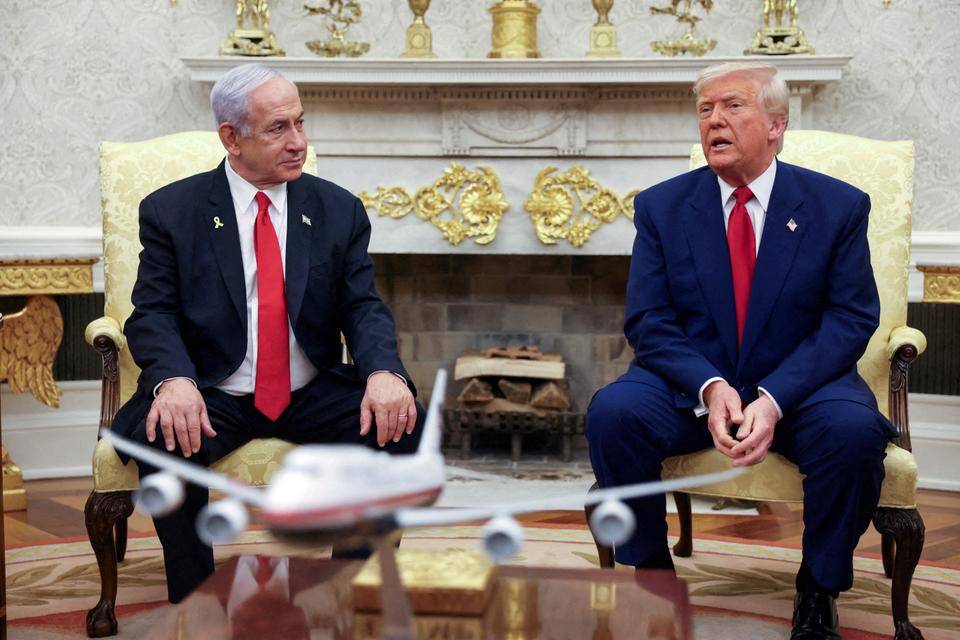Diplomatic Crossroads: Netanyahu Heads to Washington Amid Rising Gaza Ceasefire Pressure
Israeli Prime Minister Benjamin Netanyahu is set to meet U.S. President Donald Trump at the White House on July 7, 2025, in a highly anticipated session closely tied to mounting calls for a ceasefire in Gaza and the release of remaining hostages. The trip follows escalating Israeli military operations, intensifying regional tensions, and growing international demands for an end to the conflict.
This will be Netanyahu's third visit to the White House since Trump’s return to office in January. The invitation comes amid record-high casualties and humanitarian crisis in Gaza, with over 56,000 Palestinians reportedly killed since October 2023 and tens of thousands displaced by bombardments in population centers such as Gaza City, Khan Younis, and Rafah . Trump conveyed optimism about securing a Gaza truce within a week of Netanyahu’s visit—a signal of urgency from Washington .
The visit intensifies diplomatic momentum. Israeli Strategic Affairs Minister Ron Dermer remains in the capital for ceasefire preparatory discussions. White House officials expect the talks to cover Iranian threats and regional stability as well .
On June 30, Israel escalated air and ground strikes across Gaza in response to Hamas resistance. At least 60 Palestinians were killed in a single wave of airstrikes in northern Gaza—including one devastating hit on a crowded café—according to local authorities . Evacuation orders have driven much of Gaza’s civilian population into southern districts, while Israeli forces continue to expand security corridors, such as the Morag Corridor in southern Gaza—a strategic zone first declared in early April and now fully under IDF control . Roughly 80% of Gaza now falls under evacuation directives or operation zones .
Hamas has maintained that they will only facilitate further hostage releases within the context of a comprehensive truce. Israel, on the other hand, demands full disarmament of Hamas as a prerequisite . These hardline positions have stalled ceasefire talks, even as mediators—including Qatar, Egypt, and the U.S.—push for renewed negotiations .
As his escalation campaign grinds on, Netanyahu appears to recalibrate. He now publicly prioritizes hostage release over the complete destruction of Hamas, reflecting growing domestic and international pressure . Trump, for his part, has been vocal on social media and in statements urging Israel to act swiftly to end the fighting and free hostages .
Former Trump envoy Steve Witkoff has been active behind the scenes. His "Witkoff plan"—which proposed a 60-day ceasefire in exchange for hostage exchanges and potential displacement of Palestinian civilians—has faced opposition, including rejections from Jordan and Egypt . Nevertheless, proponents argue it serves as a pragmatic bridge toward a longer-term peace framework.
Netanyahu arrives in Washington at a complex inflection point. Ahead of his visit, the U.S. approved a $510 million arms sale to Israel—primarily precision-guided munitions—underscoring continued military support even as diplomatic pressure increases . Analysts note this dual-track approach—pressure for ceasefire coupled with armament support—is being used by Washington as leverage over Israeli decision-making .
Two months ago, the Trump administration imposed tariffs on up to 17% of Israeli goods amid broader trade strategy. Israel quickly reciprocated, lifting tariffs on U.S. exports—signaling its desire to preserve ties while positioning the Gaza truce as a diplomatic pivot .
Beyond Gaza, discussions are expected to include Israel's broader regional strategy. Tensions with Iran have sharpened after U.S. airstrikes on Iranian nuclear facilities, drawing Israeli interest in a coordinated response . Syria, too, features in the agenda, with plans to address Iran’s regional proxies and Syria’s shifting political dynamics .
Ultimately, Trump’s goal appears to be reasserting U.S. diplomatic influence—both militarily loyal and diplomatically active—in a volatile Middle East.
A key issue is hostage accountability. Netanyahu faces internal pressure from far-right allies urging continued offensive action, while families of hostages and much of the world demand swift negotiations and humanitarian reprieve . The existing truce framework, brokered in January, provided for a prisoner swap after six weeks—but failed to transition smoothly to a second phase .
The new August strategy—restoring truce terms with Hamas and rescuing the remaining captives—could prove decisive. Trump’s influence and Israeli readiness to recalibrate will be critical.
The meeting is in part designed to leverage U.S. influence. Trump has expressed cautious confidence that a ceasefire might materialize within days of the visit, though he acknowledged multiple times that there were “no guarantees†due to volatile ground conditions and entrenched positions .
President Trump reportedly hopes the summit will also launch renewed regional peace agendas—including potential normalization with Saudi Arabia, and a stronger Israeli-Saudi axis—linked to avoiding long-term entrenchment in Gaza and curbing Iran’s influence .
1. A verbal ceasefire timeline or commitment to resume truce talks immediately.
2. Detailed hostage exchange plan, including potential phased releases.
3. Expanded U.S. involvement, possibly including peacekeeping or infrastructure oversight (echoing Trump’s earlier “takeover Gaza†proposals) .
4. Coordination on Iran strategy, in sync with regional pressure from Gulf partners.
5. Economic alignment—tariff rollback or industrial cooperation to reinforce diplomatic cohesion.
Hamas’s complex position: The group demands full Israeli withdrawal and guarantees to prevent future conflict before hostage deals can proceed .
Internal Israeli politics: Far-right allies oppose any truce that cedes territory or limits future action .
Humanitarian collapse vs deterrence: Israel insists the offensive is essential to dismantle Hamas; critics argue mass displacement is fueling a global outcry and undermining strategic legitimacy .
Regional blowback: Palestinian neighbors and Gulf allies, notably Jordan and Egypt, resist forced displacement schemes and push for Palestinian statehood as part of any truce .
Prime Minister Netanyahu’s White House visit will be a critical test of whether U.S. diplomacy can rekindle progress in Gaza, stabilize hostages’ fate, and provide a framework for a wider regional peace process. The optics are heavy: Israel faces a ticking clock before the next round of hostilities could resume; Hamas remains unyielding; international patience is fraying; and regional dynamics hinge on fragile alliances with Gulf partners.


